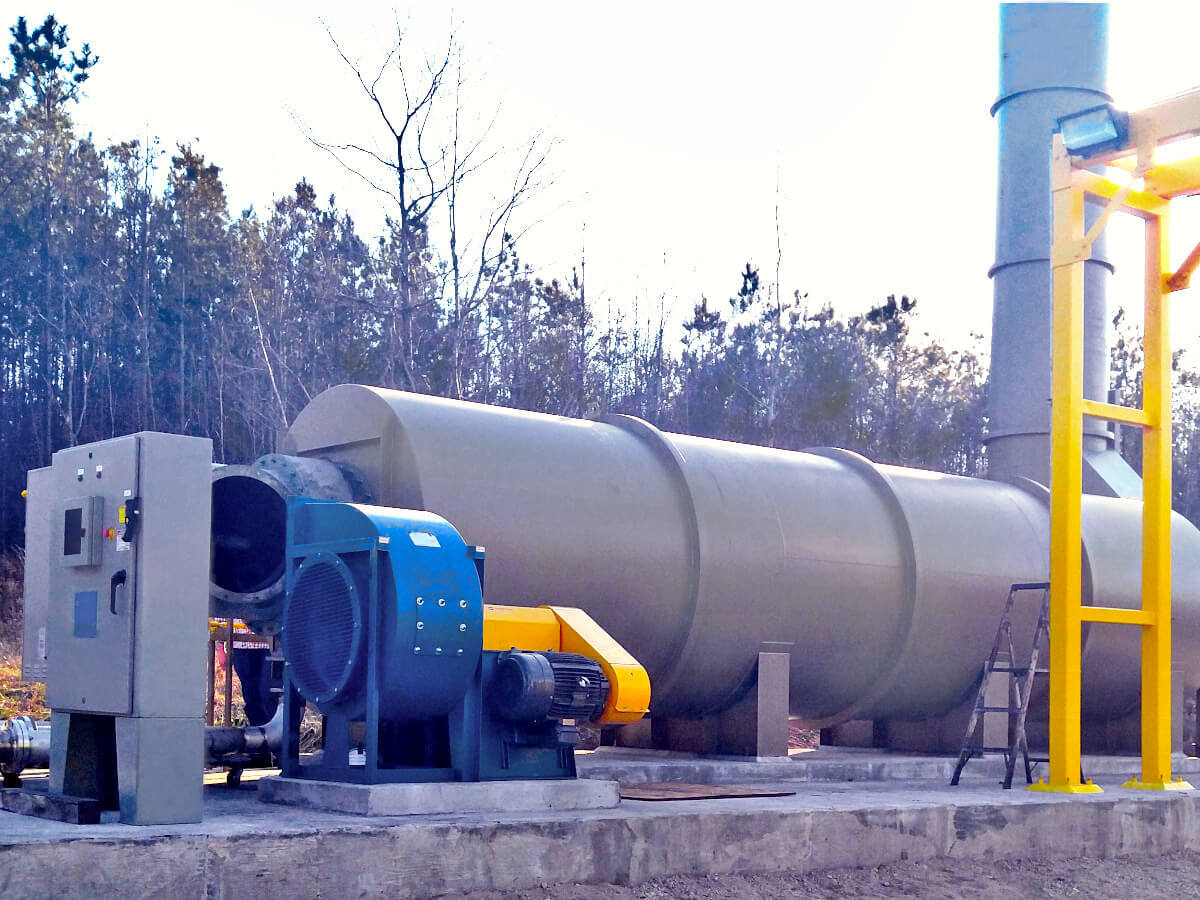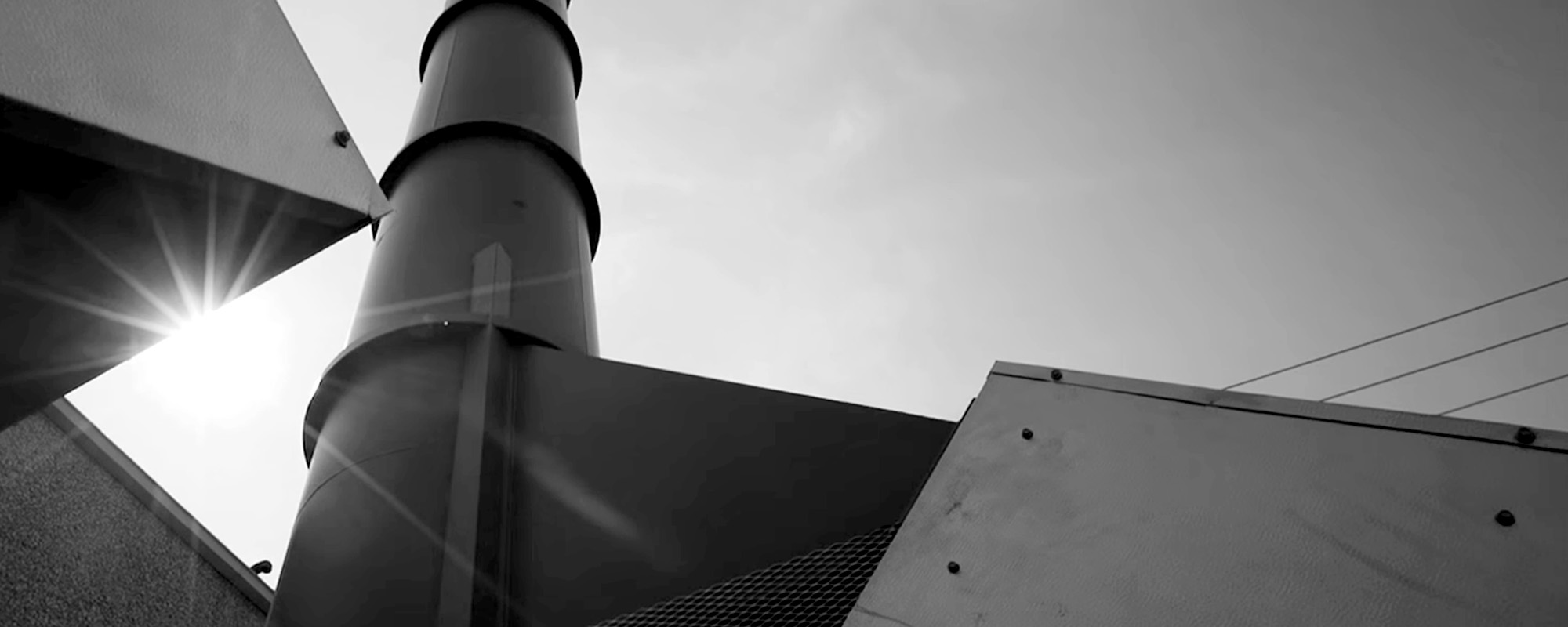Enclosed Flare Abates Waste Acid Gas for Midstream Amine Facility
- Pollutant: Volatile Organic Compounds (VOCs)
- Industry: Midstream
- System: Enclosed Flares
A midstream processor needed an air pollution control solution that could intermittently treat their waste acid gas exhaust during plant shutdowns. The amine facility used an Enclosed Flare to successfully abate these pollutants.

Initial Operating Issue
A midstream gas processing facility was evaluating the purchase and installation of new air pollution control equipment to intermittently treat waste acid gas exhaust from one of their amine units located in New Mexico. During normal plant operation, this waste acid gas exhaust stream containing Hydrogen Sulfide, CO2, Methane and other VOCs was compressed and injected into a disposal well. When the compressors at the plant were down – either for planned maintenance or an unexpected shutdown – it was still necessary to treat this exhaust stream prior to discharge to atmosphere. The customer needed a system that could treat the exhaust stream during these shutdowns. Under normal operating conditions though, the pollution control equipment would be in stand-by mode and available to accommodate the plant when needed during an upset situation.
Proposed Solution
After careful analysis of the facility’s process, maximum possible exhaust volume, and need to come on-stream quickly, Pollution Systems’ engineering experts recommended a Horizontal Enclosed Flare (aka Combustor) for the abatement of waste acid gas from the amine unit. Thermal destruction of waste gases is a common control technique to destroy HAPs, VOCs and/or odors in many industrial processes. Destruction arrangement of custom system controls with touchscreen display – air conditioned to protect them from outside temperatures – enabled easy start-up and shut down with minimal operator interface. The installation of additional controls would further maximize operator safety.
Few moving parts and constant stable operating pressures and temperatures, the HCEF-21 Enclosed Flare easily achieved the targeted ≥99% destruction efficiency. Furthermore, complete system automation ensures all of Pollution Systems’ air control systems effectively destroy VOCs and other combustibles.
The Technology
Thermal oxidation is accomplished by maintaining the object pollutant stream at a targeted temperature above its auto-ignition temperature for a specific amount of time (residence time) in the presence of adequate levels of oxygen. The combustion products of carbon dioxide and water exit with the treated exhaust. Enclosed Flares are proven technology for HAP and VOC abatement and provide a simple, straightforward means to ensure compliance. They operate over a large process window and can safely handle incoming fluctuations in waste stream flow rates and compositions. They are also the least maintenance-intensive of all air pollution control technologies and exhibit the highest on-stream time/reliability.
Implementation
Pollution Systems designed and built a Horizontal Enclosed Flare, Model #HCEF-21, that had the flexibility to treat 4 mmscfd of vapor with up to 21 mmbtu/hr of energy content. Appropriately sized to easily handle the fluctuating waste stream loads, this system was capable of quickly coming onstream and maintaining continuous steady state operating conditions for nearly indefinite periods. The system was also designed as a horizontal unit to facilitate access for maintenance. The HCEF-21’s arrangement of custom system controls with a touchscreen display – air conditioned to protect them from outside temperatures – enabled easy start-up and shutdown with minimal operator interface. Additional controls were installed to maximize operator safety.
The Final Result
Pollution Systems built and installed the Horizontal Enclosed Flare Model #HCEF-21 on time and at the agreed price. The Enclosed Flare successfully abated Hydrogen Sulfide, Methane, and other VOCs >+99% DRE from the variable waste acid gas streams sent to the flare for treatment during compressor shutdown. All in all, the customer has been very pleased with the flexibility and high reliability of the Enclosed Flare: The HCEF-21’s cost, ease of operation, and operator safety has only added to their satisfaction with the system.
Related Case Studies
Horizontal Enclosed Flare Abates Hydrocarbons from Recycling Process
A recycling facility installs a Horizontal Enclosed Flare by Pollution Systems to control its hydrocarbon (total & non-methane) emissions and streamline the process.
- Pollutant: Volatile Organic Compounds (VOCs)
- Industry: Recovery & Recycling
- System: Enclosed Flares
Recuperative Thermal Oxidizer Reduces Fuel Costs for LFG Facility
An LFG facility receives significant energy savings by using a recuperative thermal oxidizer to destroy VOCs in their process stream. This solution incorporated two heat exchangers for additional energy saving benefits.
- Pollutant: Volatile Organic Compounds (VOCs)
- Industry: Recovery & Recycling
- System: Thermal Oxidizers

